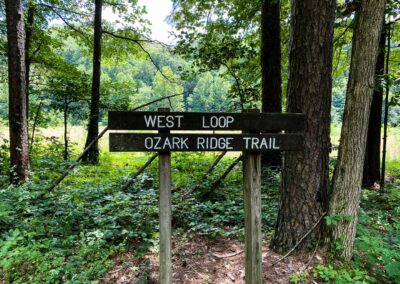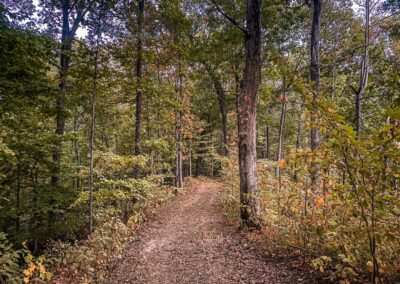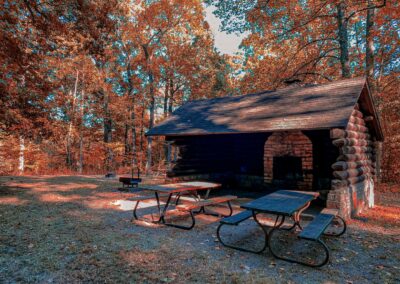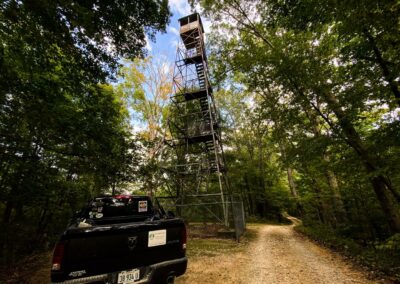Illinois Campground Review:
Trail of Tears State Forest
Campground
Jonesboro, Illinois
Trail of Tears State Forest Campground is located in Jonesboro, Union County, in the southern Illinois region.
Class C (tent with vehicle access) and Class D (tent with backpacker access) sites are available at this campground. There are 14 sites. Each site is spread apart. A few sites are backpack-in only. Some sites have open shelters with fireplaces, as you’d see on the AT trail.
Class C sites are closed from December 24 to the second week of May. Class D (backpacking only) sites remain open. Gates are closed and locked on all gravel roads leading to campsites.
Camping fees are $8.00 a night.
Reservations can be made online, or self-reservations can be made on-site at the white barn.
The Illinois Department of Natural Resources manages this campground. You can reach the Site Superintendent by calling 618-833-4910.
Trail of Tears State Forest Campground: First Impression
Trail of Tears State Forest is a hidden gem in southern Illinois. It doesn’t seem to be widely visited, and aside from routine maintenance, the park seems to be able to take care of itself without needed personnel on site.
The campsites are spread apart generously. Some have half-shelters with fireplaces built into them. There are about two shelters on each side. There is a north-side camping area and a south-side camping area. You can reach these by using one-direction gravel roads on ridgelines. Most of the sites have vehicle access, restrooms, and burn pits. There was no water or electricity at any of the sites.
Trail of Tears State Forest Campground is the best we’ve ever stayed at. The campground is clean, and the sites so generously spaced apart give you plenty of privacy from other campers. We can’t wait to go back and camp there again.
If you’re looking for a unique southern Illinois camping experience, check out Trail of Tears State Forest Campground.
Pros of the Campground
- Cheap pricing ($8.00 a night)
- Ability to register online
- Ability to register on-site (self-registration system)
- Sites are generously spaced apart, giving campers much privacy
- Sites can hold multiple vehicles and tents
- Fire pits at each site
- Picnic tables at each site
- Garbage and recycling cans at each site
- Some sites have half-shelters with fireplaces built into them
- Restroom access near each site
- Hiking trails near each site
Cons of the Campground
- No water in the campground
- No electricity in the campground
- Only a few half-shelters, those are usually sought after first
- Roads are one-way
- Some areas of the roadways are very steep on both sides (drive carefully)
- More sites could be put in and still have privacy
- No open visitor center
- No trail information at trailheads
Overall Opinion of Trail of Tears State Forest Campground
The pros outweigh the cons when it comes to this campground.
Trail of Tears State Forest is my favorite campground in southern Illinois. The area’s beauty is so unique that it feels like you’re driving and camping in the Missouri Ozarks. The sites are the best-kept sites I’ve ever experienced, and the half-shelters were my favorite part. The road was steep but made for a fun drive, and it’s also an ideal gravel biking route. There is even a fire tower right off the road. Sadly, you can’t go up it.
I will stay at this campground again, and it will likely be my first preference when camping on the West Side of the Shawnee National Forest.
I highly recommend staying at this campground if you get the chance.
Trail of Tears State Forest Campground Information
Here is some basic information about Trail of Tears State Forest Campground.
How to get to this Campground
From Murphysboro, take highway 127 south to State Forest Road to the east. From Jonesboro, take highway 127 north to State Forest Road to the east. Take State Forest Road to the west from Wolf Lake (route 3).
Please use this Google Map page and enter your location to get to the State Forest.
Access to the North Camping Section of the area can be accessed at the one-way gravel road near the east entrance of the park on State Forest Road.
The South Camping Section of the area can be accessed at the one-way gravel road from the road across from the Visitor Center (White Barn) on State Forest Road. Stay right until you reach the single-lane road on your right.
Activities to enjoy at this Campground
There are miles upon miles of hiking and equestrian trails within this State Forest. Some of the trails are hiking only. Some are multi-use between hikers and horseback riders. Please yield to all equestrians and speak to them, so their horses and mules know that you’re not a threat. Remember to share the trail responsibly. Most of the trails are moderately difficult, with rolling hills and steep terrain.
Mountain biking and gravel riding can be done on all non-gated gravel roads and paved roads in the park. Bikes are not allowed on fire trails that are gated or nature preserves.
A CCC heritage trail takes you to one of the old fire watch towers that were once used to watch for wildfires in the area. Sadly, you can’t go up it, but you can still get close to it and observe it from the ground. Please respect park regulations of not attempting to climb the fence and get on the tower.
Numerous creeks in the area have unique rocks, as you’d find in the Missouri Ozarks. It is an excellent rock-hounding spot. Some of the creeks have cascades and nice wading areas when they have water in them. These creeks and cascades are very rainfall dependent.
There are numerous shelters throughout the State Forest that can be rented online or from the self-registration system at the White Barn.
Restrooms, trailheads, an equine trailhead, and playground/picnic areas are scattered throughout the park.
Special Rules and Considerations of this Area
The Illinois Department of Natural Resources manages the trail of Tear State Forest (IDNR), a state agency, not federal. It is considered a state park.
Day-use hours are from 6:00 AM to 10:00 PM. Trail users must be off trails by dusk.
Quiet hours in the campground are from 10:00 PM to 7:00 AM.
All pets must be kept on a leash.
An adult must accompany all minors.
Groups of 25 or more must register with the state before using the area.
Venomous copperheads and timber rattlesnakes are present in this area. It is unlawful to handle, collect, or harm these snakes. If you see them, leave them be, and they will leave you be.
Poison ivy occurs in this area, especially off-trail.
You should stay on the designated trails to avoid getting lost. It is a requirement to stay on the trail in the Ozark Hills Nature Preserve.
Hunting occurs in this area during the designated hunting season. Hunters must possess Illinois state hunting and firearm permits. IDNR Conservation Law Enforcement patrols and enforces the law in this area. Union County Sheriff Deputies may also be present in this area.
In the event of an emergency, call 911.
Make sure you bring plenty of food and water when hiking, as the trails are moderately difficult with rolling hills and steep terrain.
Trail of Tears State Forest Campground History
Trail of Tears State Forest is a part of the southern section of the Ozark Hills natural area. The area consists of rugged rolling hills composed of chert, a weathered limestone residue. Chert was also often used for arrowhead and tool creation by Native Americans who once used and lived in the area.
There are only 600 species of plants, wildflowers, and ferns that occur in the State Forest. Many hardwood trees, virgin growth, and even bamboo (giant cane) are in some forest areas.
Native Americans widely used the area. Chert was mined from the nearby Iron Mountain. After European settlers arrived, around 1838-39, Native Americans were forced to walk to a new reservation. This route was called the Trail of Tears. Many Native Americans died along this route because of its horrible conditions. This was before modern roadways and systems to help people travel. Some of the camps for this walk were just four miles from the State Forest.
In 1925, the State of Illinois purchased land to create the State Forest. The Civilian Conservation Corps constructed the state forest soon after during the 1930s.
The Trail of Tears State Forest today is over 5,000 acres.
The Trail of Tears State Forest Campground is one of the most unique campgrounds in the State of Illinois.
Thank you for taking the time to read my review of this campground. My campground reviews are new. If there are sections or particular topics you want me to add to them in the future, please comment below and let me know. In the meantime, be sure to subscribe to my free newsletter for monthly articles, tips, guides, events, and other fun stuff.
Watch the videos for this trail!
Below is a recent video that we filmed while enjoying this area.
Please Support Hiking with Shawn
Alrighty folks, I hope you have enjoyed this content. I provide it for free and it takes a while to create. If you would be so kind enough to support my efforts, you can do so by sharing this post with others, especially on social media. Be sure to subscribe to my YouTube Channel to see my latest videos, shorts and live streams. Follow me on Facebook, Instagram, Twitter and TikTok for unique content that you will only find on those pages. You might also join my Southern Illinois Hiking & Outdoor Resources Group on Facebook, too!
You can also support me by becoming a Patreon Supporter for as little as $3/month and you can cancel anytime (no contracts or catches). Patreons get access to extra features, exclusive articles, sticker packs, gifts and more. Consider buying official Hiking with Shawn Merchandise as another way to support me. I spend a lot of money on Hiking with Shawn and because of extremely high public land permit fees, I make very little money in return so everything helps.
Thanks again for checking out another one of my articles and until next time, I’ll see you on the trail!
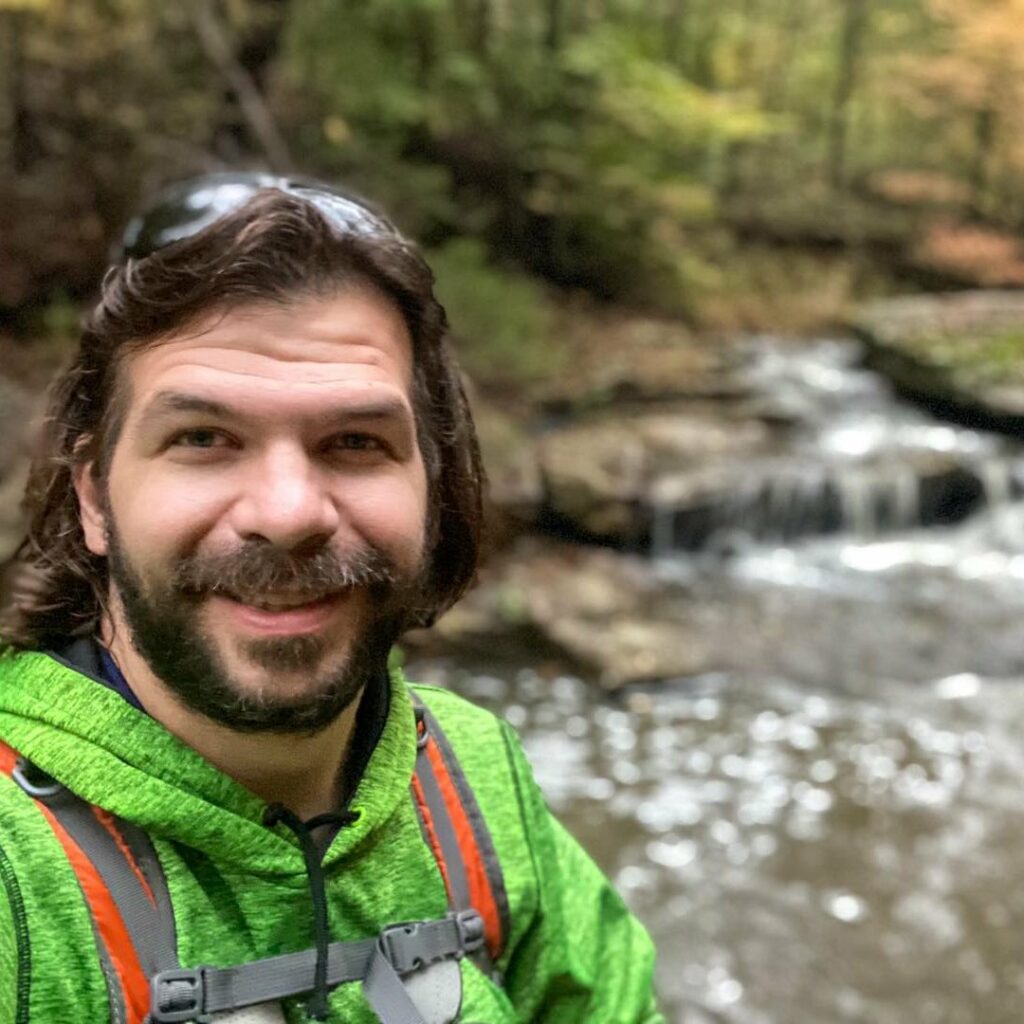
Shawn Gossman
Founder, Hiking with Shawn
Howdy folks! My name is Shawn Gossman and I founded Hiking with Shawn. I’m an avid hiker, cyclist and outdoorsman here in the Shawnee National Forest. I was born and raised in Southern Illinois and never want to leave. Click here to learn more about Shawn Gossman

